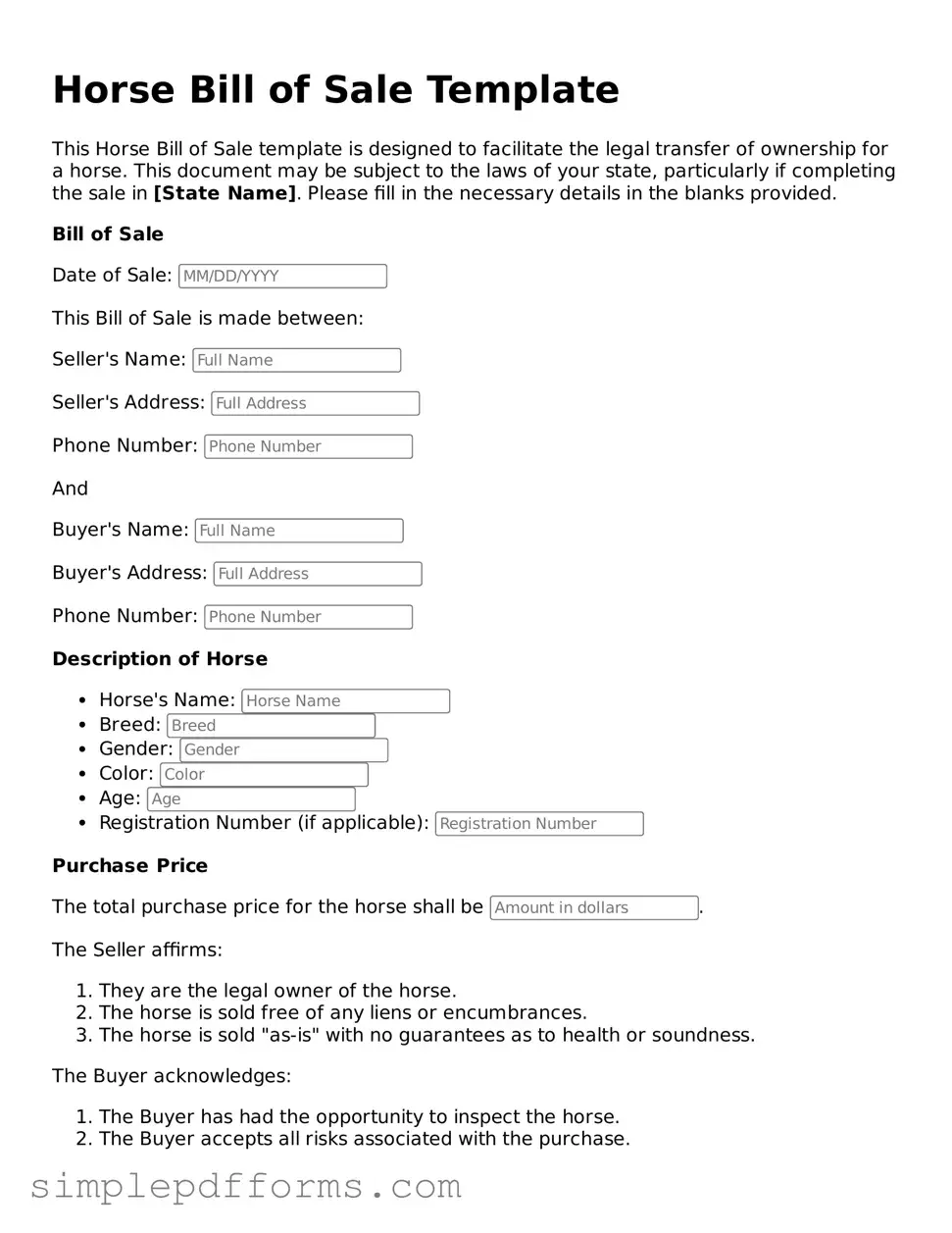Free Horse Bill of Sale Form
A Horse Bill of Sale form is a legal document that outlines the transfer of ownership of a horse from one party to another. This form serves as proof of the transaction and includes important details such as the horse's description, sale price, and the names of both the buyer and seller. Understanding this document is essential for anyone involved in buying or selling a horse, ensuring that both parties are protected throughout the process.
Open Horse Bill of Sale Editor Now
